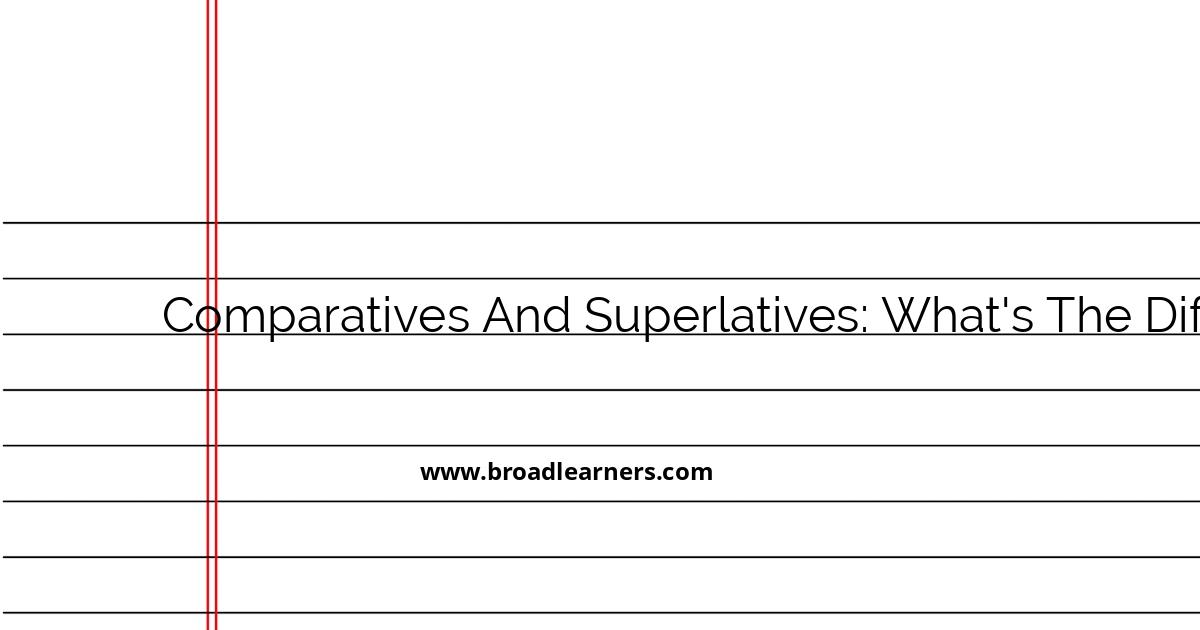Comparatives and superlatives are essential components of the English language, often used to compare and contrast people, objects, or places. Understanding the differences between these two forms and how to correctly use them can significantly enhance your communication skills. This article provides a detailed explanation of comparatives and superlatives, complete with examples.
Understanding Comparatives
Comparatives are used to compare two entities, highlighting a difference in a specific quality or characteristic. This form usually ends in "-er" or is formed by placing "more" or "less" before the adjective or adverb. The choice between "-er" and "more/less" depends on factors such as the length and structure of the adjective.
- Examples of Comparatives:
-
- Taller: Jane is taller than Mike.
- More interesting: This book is more interesting than the one I read last week.
- Less expensive: This car is less expensive than the other model.
Detailed Explanation of Examples:
Taller: In the sentence "Jane is taller than Mike," the adjective "tall" is modified to "taller" to compare Jane's height to Mike's. The "-er" suffix denotes that Jane has more height.
More interesting: When comparing "interesting", which is a longer adjective, the form "more interesting" is used. This indicates that the book currently being read holds greater appeal than the previous one.
Less expensive: In price comparisons where an item costs less, we use "less expensive." This emphasizes that the mentioned car offers a more economical option.
Understanding Superlatives
Superlatives, on the other hand, are used to express the highest degree of a quality among three or more entities. Superlatives can be formed by adding "-est" to the adjective or by preceding it with "the most" or "the least." Like comparatives, the formation depends on the adjective's length and structure.
- Examples of Superlatives:
-
- Smartest: Julie is the smartest student in her class.
- The most beautiful: This is the most beautiful painting in the gallery.
- The least interesting: Of all the movies we've seen, this one was the least interesting.
Detailed Explanation of Examples:
Smartest: In "Julie is the smartest student in her class," the adjective "smart" becomes "smartest" to denote that, of all the students, Julie exhibits the highest level of intelligence.
The most beautiful: When stating that a painting is "the most beautiful," it indicates that it surpasses all other paintings in terms of beauty within the gallery.
The least interesting: This form highlights that, among all movies watched, this particular film ranked lowest in terms of captivation or intrigue.
Key Differences Between Comparatives and Superlatives:
- Comparatives: Used to compare two items or entities. They often end in "-er" or use "more"/"less."
- Superlatives: Used to convey the most or least of a quality among three or more entities. They typically end in "-est" or use "the most"/"the least."
Both forms are integral for expressing differences in qualities and understanding how to apply them correctly will aid in forming clearer, more precise sentences. Whether comparing two things or differentiating one among many, recognizing the function of comparatives and superlatives will enhance both written and verbal communication.

Did I miss anything? Respond below